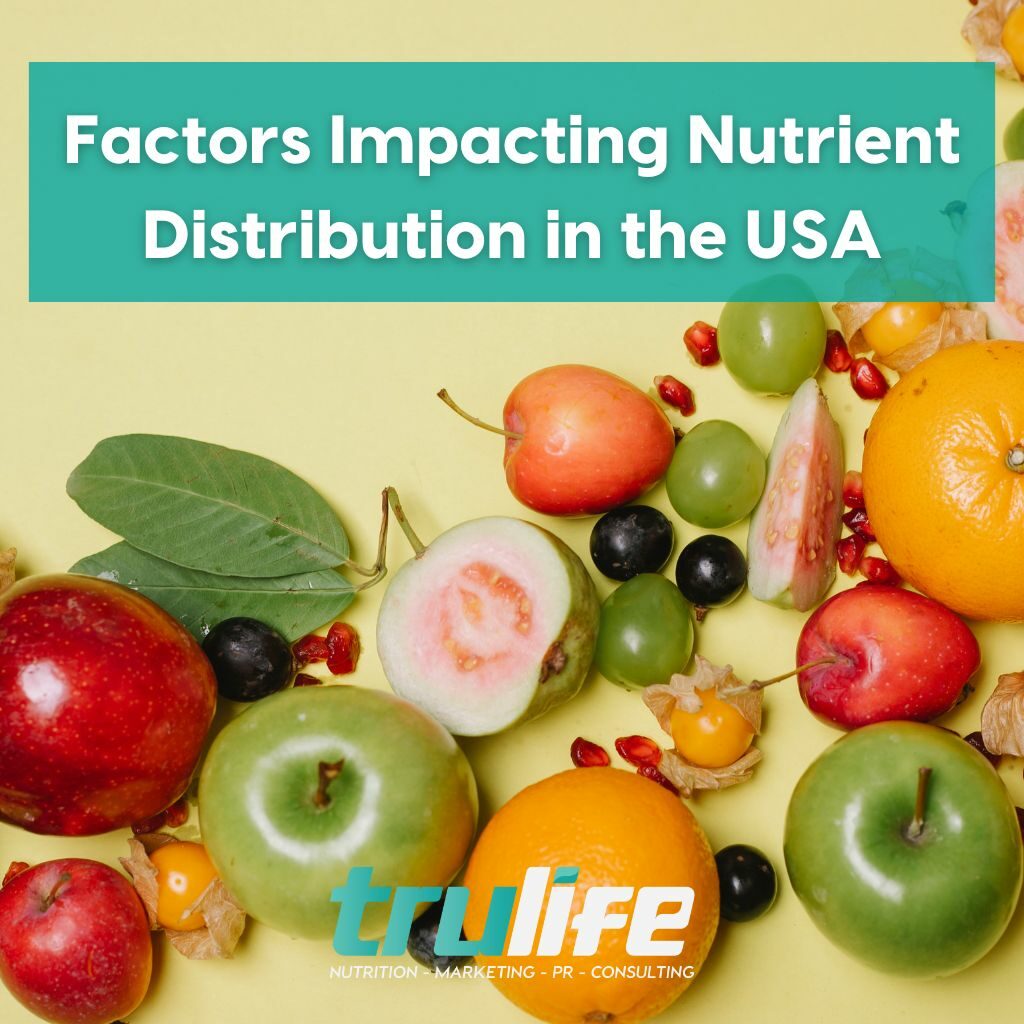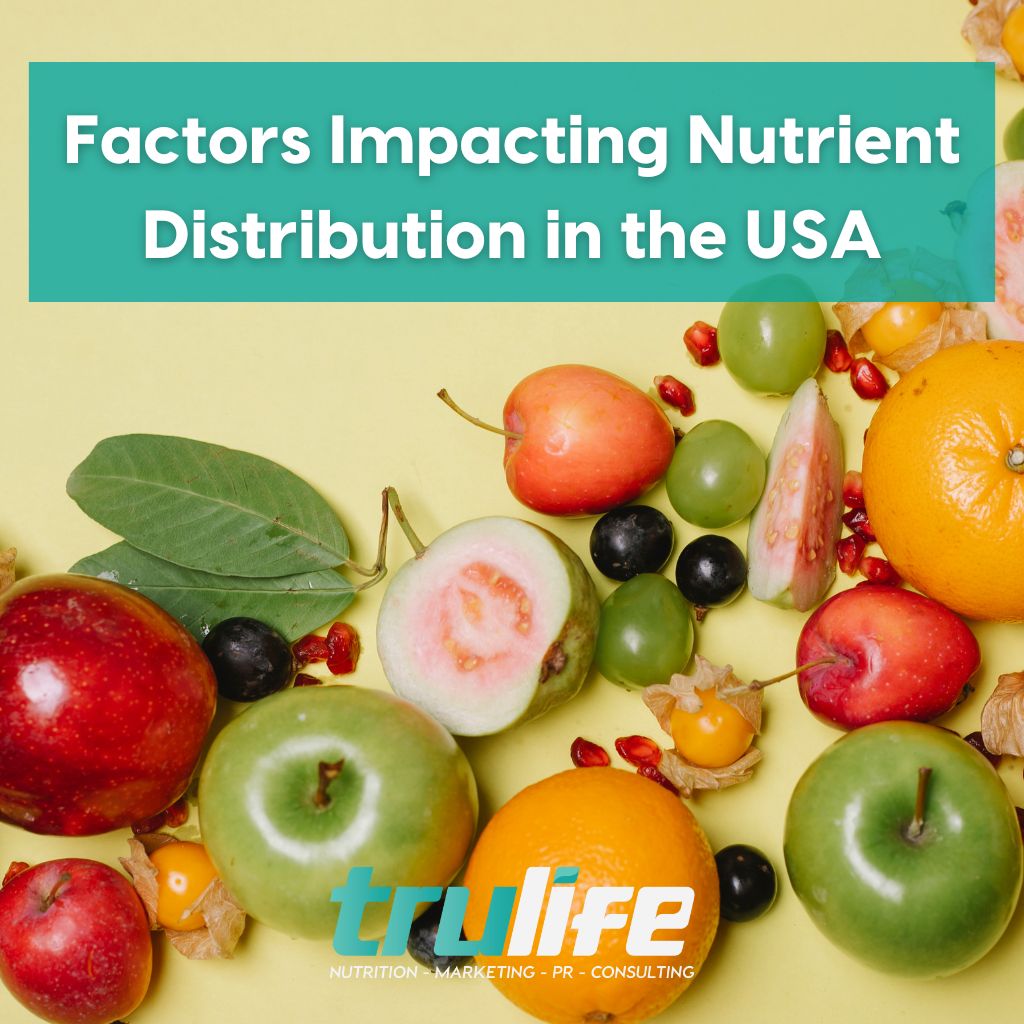Nutrient distribution in the USA is an important issue, as nutrient deficiencies can have serious health implications. The nutrient composition of food across the United States varies widely by region and population group, with some areas having much higher levels of certain nutrients than others. Different ethnic groups also tend to consume different types of foods, leading to variations in nutrient availability throughout the country. It is essential that people understand how nutrient availability differs from one area to another so they can make informed decisions about their diets and healthcare needs.

Overview of Nutrient Distribution Deficiencies in the USA
The most prominent nutrient deficiency in the US is vitamin D. This vitamin is important for bone health, as well as immune system functioning. Vitamin D deficiency has been linked to diseases such as osteoporosis and rickets, both of which are major concerns for healthcare providers. The prevalence of vitamin D deficiency among adults in the US is estimated to be around 40%.
While certain populations are more at risk for this particular deficiency than others, most Americans simply do not get enough vitamin D from their diet alone. In addition to being found in small amounts in certain foods such as salmon and eggs, vitamin D is also synthesized when skin is exposed to sunlight. Unfortunately, many people spend too much time indoors or use sunscreen regularly, limiting their exposure to this essential compound.
Even those who consume fortified products may be at risk of inadequate nutrition due to unequal distribution of resources across the country. In some areas access to healthy food can be quite limited due to poverty or lack of transportation options. This means that people living in these areas often have difficulty obtaining sufficient amounts of essential vitamins and minerals through their diet alone. This can put them at higher risk for various nutrient-related diseases and other health complications throughout life.
Factors Impacting Nutrient Distribution in the USA
The nutrient distribution in the USA is impacted by a number of factors, including socio-economic status, access to healthy foods, and cultural preferences.
Socio-economic Status
Socio-economic status is one of the biggest influences on nutrient distribution across the US. People living in poverty often have difficulty affording nutrient-dense foods such as fresh fruits and vegetables, putting them at higher risk for nutrient deficiencies. In addition, those who are unemployed or underemployed may not have access to employer-provided health benefits that include coverage for nutritional supplements or nutrient testing. This can further limit their options when it comes to achieving nutrient adequacy.
Access to Healthy Food
Access to healthy food is another major factor impacting nutrient distribution in the USA. Some areas of the country lack grocery stores with quality products or other nutrient-rich items such as lean meats and seafood. This means that those living in these areas may be unable to obtain nutrient-dense foods without enduring long commutes or relying on delivery services.
Cultural Preferences
Finally, cultural preferences also play a role in nutrient distribution across the US. Different ethnic groups tend to consume different types of foods due to historical and geographical reasons, leading to variations in nutrient availability between different populations. For example, people from certain regions may have historically relied heavily on animal proteins rather than plant proteins which are usually more nutrient dense and contain essential vitamins and minerals such as iron and zinc.
In order to ensure optimum nutrient availability among all US citizens, it’s important for policymakers to understand how socio-economic status, access to healthy food, and cultural preferences influence nutrient distribution throughout the country. Taking into account these factors will help ensure that everyone has access to adequate nutrients regardless of where they live or what their background is.
Analysis of Nutrient Availability and Accessibility Across Different States
The nutrient availability and accessibility across different states in the USA is an important consideration for those seeking to achieve nutrient adequacy. Nutrient availability and accessibility vary widely depending on the state, which means that individuals may have difficulty obtaining essential vitamins and minerals in some areas, while others may have easier access to nutrient-dense foods.
For example, states with higher median incomes such as California and New York tend to be more nutrient-rich, as they tend to have larger populations who can afford nutrient-dense foods such as fresh fruits and vegetables. On the other hand, states with lower median incomes such as Mississippi and Alabama usually have fewer resources available for nutrient-dense foods due to poverty. In these areas, access to healthy food can be limited due to a lack of transportation options or high prices for nutrient-rich items.
As mentioned before, cultural preferences can also influence nutrient availability in different states. For example, states with a large Latino population such as Texas and Florida may have higher levels of nutrient availability due to traditional Latin American diets which include nutrient-rich ingredients like beans and rice. On the other hand, states with a predominately white population such as Iowa and Minnesota may have lower levels of nutrient availability due to cultural associations between certain food items (such as meat) and prestige or status.
Furthermore, disparities between rural and urban areas also contribute to nutrient discrepancies among different states. Rural areas are often more prone to poverty than urban ones, meaning that those who live there may not be able to afford nutrient-dense foods such as fish or leafy greens. Additionally, access to grocery stores that carry quality products can also be difficult in certain rural regions due lack of transportation infrastructure or distance from major cities.
Impact of Nutrient Disparities on Health Outcomes in the US Population
The nutrient disparities in the USA have a considerable impact on health outcomes for its population. Nutrient deficiencies can cause a range of health issues, from nutrient-deficient diets leading to nutrient deficiencies such as iron-deficiency anemia and vitamin D deficiency to nutrient imbalances resulting in an increased risk of obesity, diabetes, heart disease, and other chronic diseases.
Childhood Nutrition
One of the most notable impacts of nutrient disparities on health outcomes is in regard to childhood nutrition. Nutrition is essential during the early stages of development as it provides the building blocks for physical and cognitive growth. Unfortunately, due to limited access to nutrient-dense foods, many children across the USA suffer from nutrient deficiencies which can have long-term consequences on their physical and mental health. Studies have shown that lower levels of nutrient availability are associated with higher rates of stunting in children under 5 years old, which can lead to long-term developmental issues such as reduced cognitive performance and learning disabilities.
In addition to affecting growth and development in children, nutrient disparities can also have serious impacts on adults’ well-being. Nutrient availability has a direct impact on one’s overall health status; people living in areas with limited access to nutrient-rich foods are more likely to experience obesity, type 2 diabetes, and cardiovascular diseases, all of which have been linked to dietary habits. Furthermore, inadequate nutrition can lead to impaired immune function and increase susceptibility to infectious disease – particularly among those who are already vulnerable due to age or underlying medical conditions.
Ethnic Groups
Finally, nutrient disparities may also contribute to health inequalities between different ethnic groups within the US population. For example, recent studies suggest that African Americans living in areas where fresh fruits and vegetables are not available, tend to consume fewer vitamins A and C than those living in areas with better access. This has been linked with higher rates of hypertension among African Americans than among Europeans or Latinos, respectively. Similarly, Latino populations may be at risk for lower intakes of calcium due to a cultural preference for animal proteins over plant proteins like legumes, which contain higher amounts of calcium as well as other essential minerals for bone health such as magnesium and zinc.
Overall, it is clear that nutrient disparities across different states in the USA have far-reaching implications for public health. From poorer childhood nutrition rates leading to cognitive deficits later in life, increased risk of chronic diseases among adults, and greater nutritional discrepancies between different ethnicities within our society. All of these can result in significant economic losses at an individual level and also reduce productivity at a national level if left unaddressed by policymakers.
Strategies to Improve Nutrient Distribution Throughout the USA
There are several strategies that can be implemented to reduce nutrient disparities and improve nutrient distribution throughout the United States. These include increasing access to nutrient-rich foods in food deserts, improving the nutritional content of school meals, implementing nutrition education programs for both adults and children, and providing incentives for people living in poverty to purchase healthier food options. Additionally, policies should be put into place that addresses underlying socio-economic issues such as income inequality which often contribute to nutrient deficiencies among vulnerable populations. By taking these steps we can ensure equitable access to nutrient-rich foods across all regions of the US so that everyone has an opportunity for optimal health outcomes.








